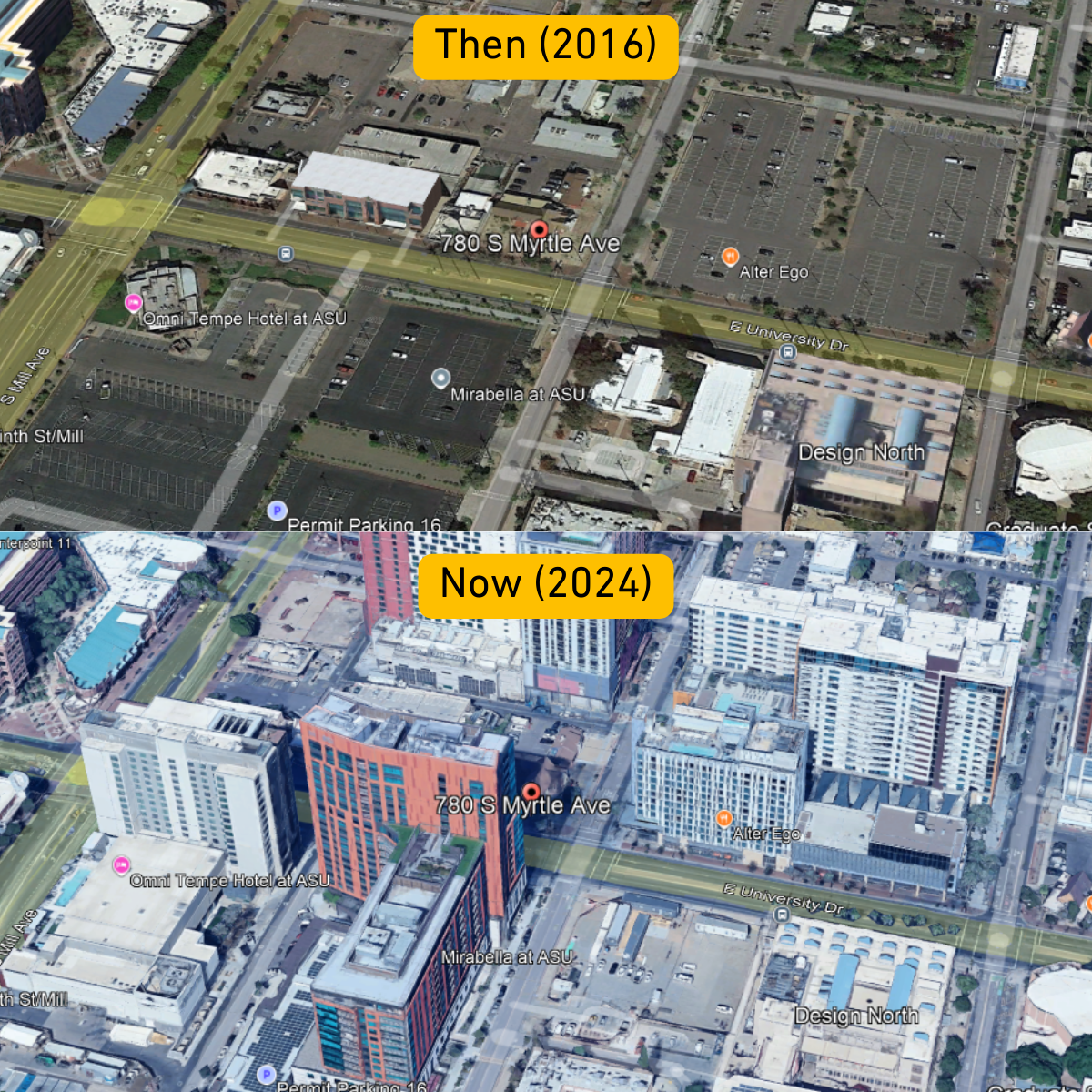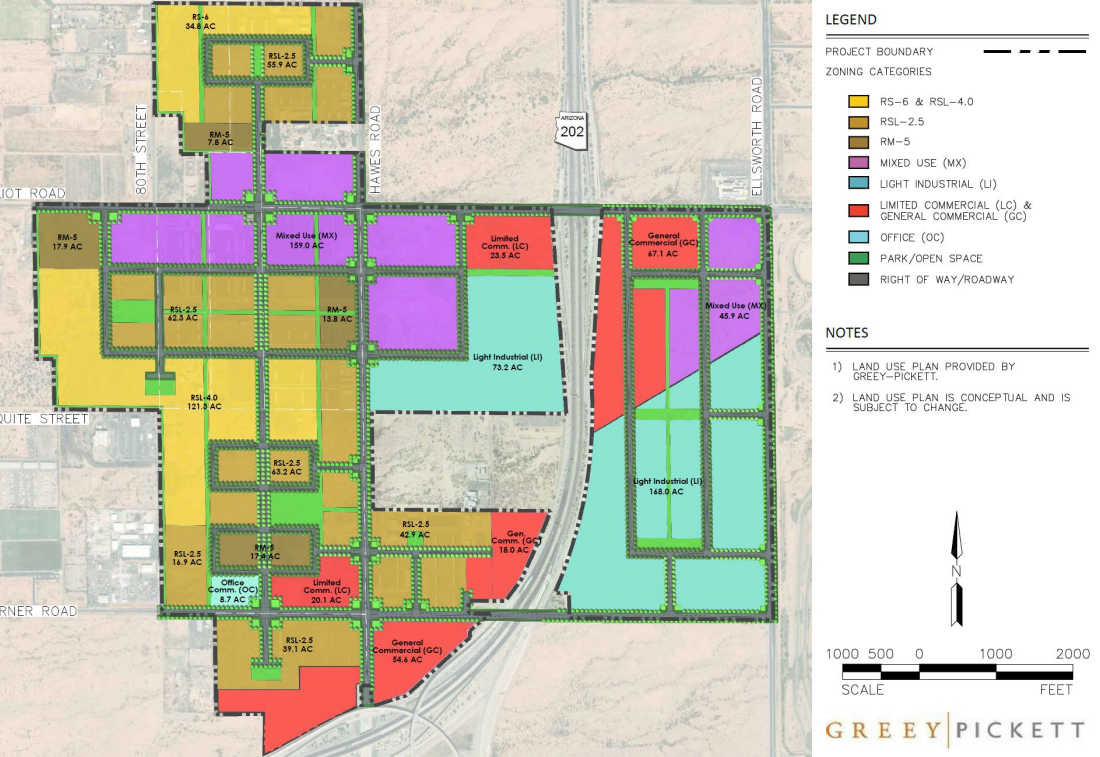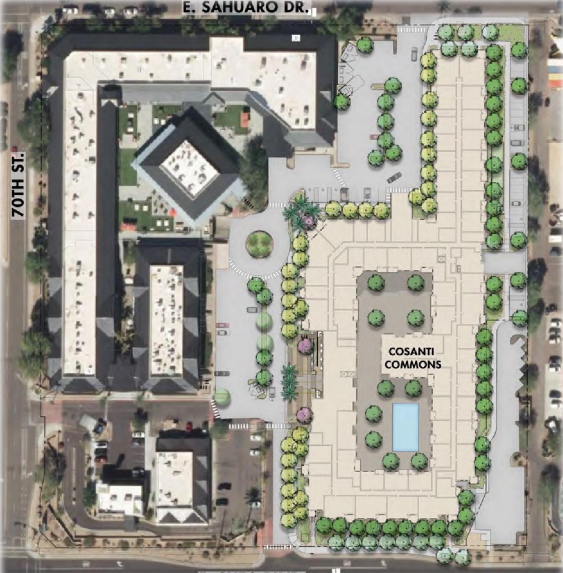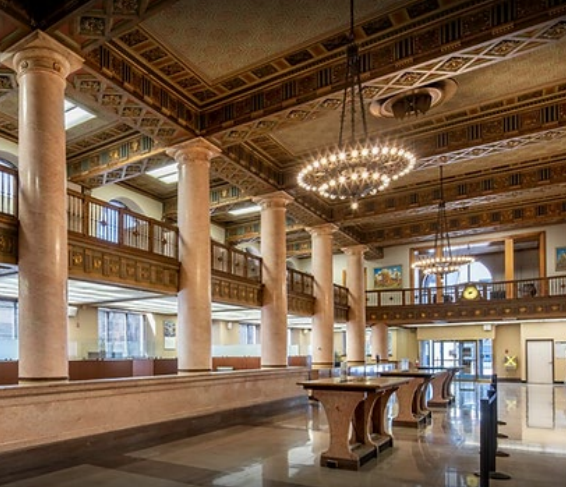Mixed-Use Zoning in Arizona
Analyzing all city decisions in AZ to explore mixed-use developments and gov. initiatives
Created: February 24, 2025 · 8 min read
Yesterday, a friend mentioned that he wants to move back to his home-state Arizona. His conundrum? He wants to live in a walkable community and in his view, there’s no walkable mixed-use communities in Arizona. After briefly touching on the great work of Ryan Johnson at Culdesac, I quickly ran out of positive examples to give.
Lucky for us - unfortunately for developers - most mixed-use projects still have to go through the planning commission and city council for approval. Thus, we have lots of data to work with.
Currently, we track the largest 10 cities in AZ: Phoenix, Tucson, Mesa, Chandler, Gilbert, Glendale, Scottsdale, Peoria, Tempe, and Surprise.
In total that brings us to 1156 real-estate related city council decisions that ReZone tracked over the last 6 months. Roughly 800 of those are either rezonings, final plats, zoning code modifications, or project amendments. According to our analysis, 76 of them are mainly related to mixed-use, walkability, or car-free communities.
Editor’s note: We purposefully excluded pedestrian-friendly stipulations (walkways, crossings, infrastructure etc.) as they are a must-have for many areas already. However, they do deserve a place in the discussion of “walkable communities”.
From Parking Lots to Vibrant Downtowns
Sometimes a project kick starts a wave of new development. Sometimes it’s the last piece that completes the puzzle. In the case of Skye Tempe, it’s the latter. The 27-Story Mixed-Use development located at 780 S Myrtle Avenue, Tempe was approved for development in October and completes an astonishing area of transformation in the heart of Tempe.

Editor’s note: Check out the google street view from 2016 vs. 2024.
Hawes Crossing
Hawes Crossing is a 1,100-acre master-planned community in Mesa, AZ. It includes everything from multifamily to mixed-use to office districts. Key developers include High Street Residential as well as Lennar. While the results are yet to be realized, it’s encouraging to see the planning department of Mesa put emphasis on walkability and mixed-use districts.

Cosanti Commons
Cosanti Commons is another mixed-use project by High Street Residential in Scottsdale, AZ. The city council passed a minor amendment to the Scottsdale General Plan 2035 to change the land use designation of the 8.6-acre site from Commercial to Mixed-Use Neighborhoods, and rezoned the property to Planned Unit Development (PUD) with a Planned Shared Development Overlay (PSD) in December.
The project includes 79,200 sqft of existing commercial buildings and a new 3-story, 345,000 sqft multifamily building with 196 units.

Noteworthy Mentions
Mesa Royale is a high-quality, two three-story building large, and 89 units big affordable housing project located in Mesa, AZ. Chicanos Por La Causa (a non-profit) is the developer focused on creating a vibrant, pedestrian-friendly environment near the Mesa Light Rail Corridor.
Stonebridge Live/Work development is an organically mixed-use project. The project will consist of three, two-story buildings with a total of 23,148 sqft. The units are designed to integrate residential living quarters with office or commercial spaces.
Zoning Code Modifications
While individual projects are impactful, the real difference makers usually come out of citywide legislation changes.
Adaptive Reuse Amendments to Mesa Zoning Ordinance
The goal of Ordinance No. 5904 is to allow redevelopment of existing commercial, office, or mixed-use buildings into multifamily residential units. It’s purpose is to revitalize underutilized or vacant buildings and increase housing options through the introduction of adaptive reuse permits which allow conversions without requiring conditional use permits, rezonings, or public hearings. According to estimates, this would include 10% of all commerical, industrial, and office buildings in Mesa.
Eligibility Criteria:
- Located in designated adaptive reuse areas
- On parcels between 1-20 acres
- In disrepair or at least 50% vacant
- Provide at least 10% affordable housing (low or moderate income) for 20 years
Development Standards:
- Reach up to 5 stories in height (with restrictions near SFR)
- Use the highest density zoning standards within a 1-mile radius
- Exempt from certain traditional zoning requirements like yard setbacks or parking minimums
Application Cap & Tracking:
- The city will issue a maximum of 202 adaptive reuse permits
- The process includes tracking issued, pending, and under-construction permits to enforce this cap
Editor's note: While this is an extremely exciting ordinance, I’ll be following this initiative keenly to see if there’s any unintended consequences.
Government Property Lease Excise Tax (GPLET)
At ReZone, we like to cover new tools and approaches that cities can use to support developers. While GPLET has been established by the State of Arizona since 1996, we’ve only recently started seeing a handful of GPLETs pass.
A GPLET replaces traditional property tax with an excise tax based on physical size. This usually reduces operating expenses and is a much more predictable method for calculating tax obligations.
GPLETs are mainly used to encourage revitalizations through redevelopments. One of these examples is the mixed-use redevelopment at 2 E Congress St in Tucson, AZ. The project aims to transform the former Chase Bank downtown branch into an event center and supper club called “The Treasury 1929”, while also including multifamily residential units.

Another example is the Central Barrio Development at 941 N. Stone Ave, in Tucson, AZ. This mixed-use development consists of 18 residential units and a small retail space on the ground floor.
Conclusion
While this is only a snapshot of mixed-use developments and initiatives in Arizona, it certainly shows that mixed-use projects are being built and are often supported by local legislation.
If you are interested in more deep dives or want to dig deep into some decisions yourself, feel free to subscribe to ReZone or reach out to me personally ([email protected]).
Bye now,
Daniel Heller